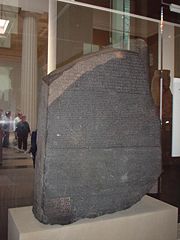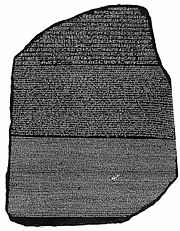获取免费报价
近期更新
Translating – if it's not done right – can be a risky business.
As well as words that have multiple meanings, there are also cultural connotations with certain phrases that can have an adverse effect on the message you're trying to communicate. Similarly, there's the risk that your intended meaning will be lost if you attempt to directly translate from one language to another, as the task is rarely a simple case of swapping words from the mother tongue into its target equivalent, or vice-versa. Read More

Rosetta Translation is named after the Rosetta Stone, one of the most famous translations in history.
By the end of the 18th century AD, the meaning of the ancient Egyptian hieroglyphs had become lost and the Rosetta Stone played a substantial part in advancing our understanding of hieroglyphic writing. The stone is made up of three versions of the same passage, written in two Egyptian scripts (hieroglyphic and Demotic) as well as Classical Greek.
Created in 196 BC, the stone was rediscovered in 1799 by French archaeologists subsequent to Napoleon’s conquest of Egypt in 1798, near the Egyptian port city of Rashid (called Rosetta by the French).

The breakthrough in deciphering the Rosetta Stone (and therefore the Egyptian hieroglyphs) came when the English polymath Thomas Young focused on a set of hieroglyphs surrounded by a loop, called a cartouche. He suspected that these highlighted hieroglyphs represented something of significance, possibly the name of the Pharaoh Ptolemy, who was mentioned in the Greek text.
If that was the case, Young could then latch on to the phonetics of the corresponding hieroglyphs, because a pharaoh’s name would presumably be pronounced roughly the same way regardless of the language. This was indeed the case, and the decipherment of the hieroglyphs was underway.
The French scholar Jean-François Champollion subsequently greatly expanded on Young’s work, and is generally credited with deciphering the Egyptian hieroglyphs.
The Rosetta Stone itself has been on display at the British Museum in London since 1802, although Egypt has been demanding its return since 2003.
我们的资格认证



